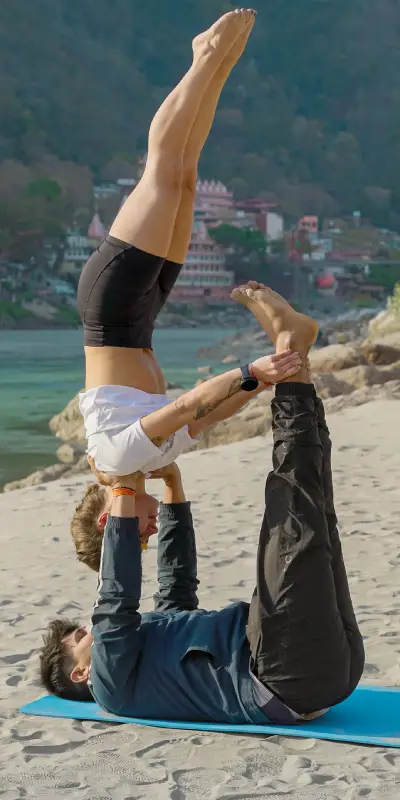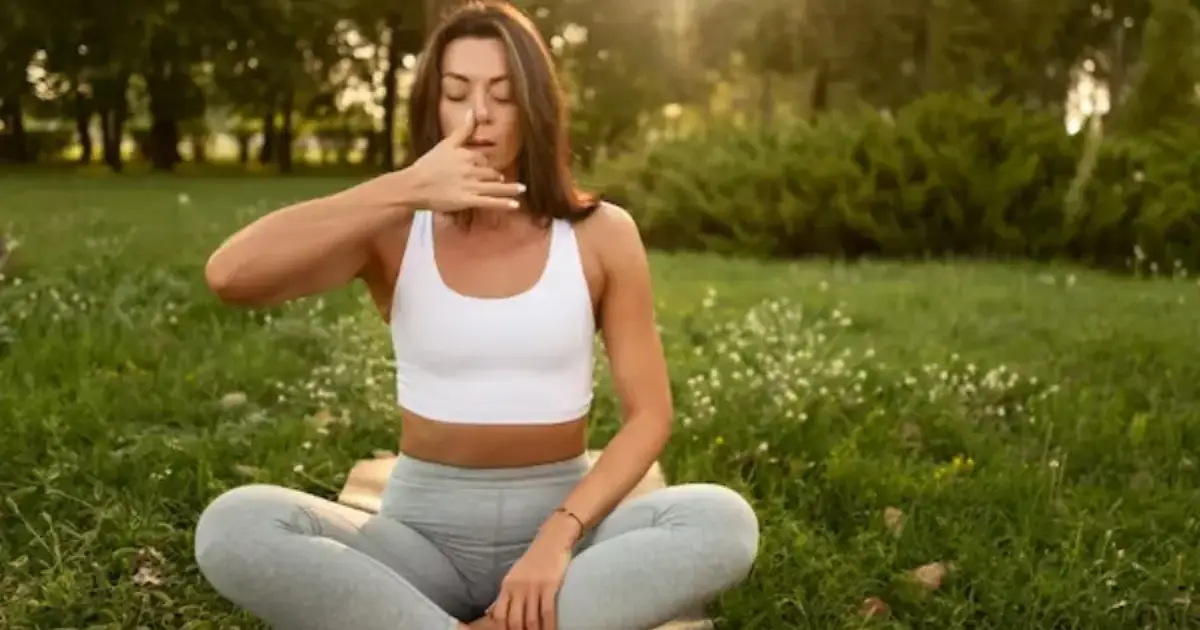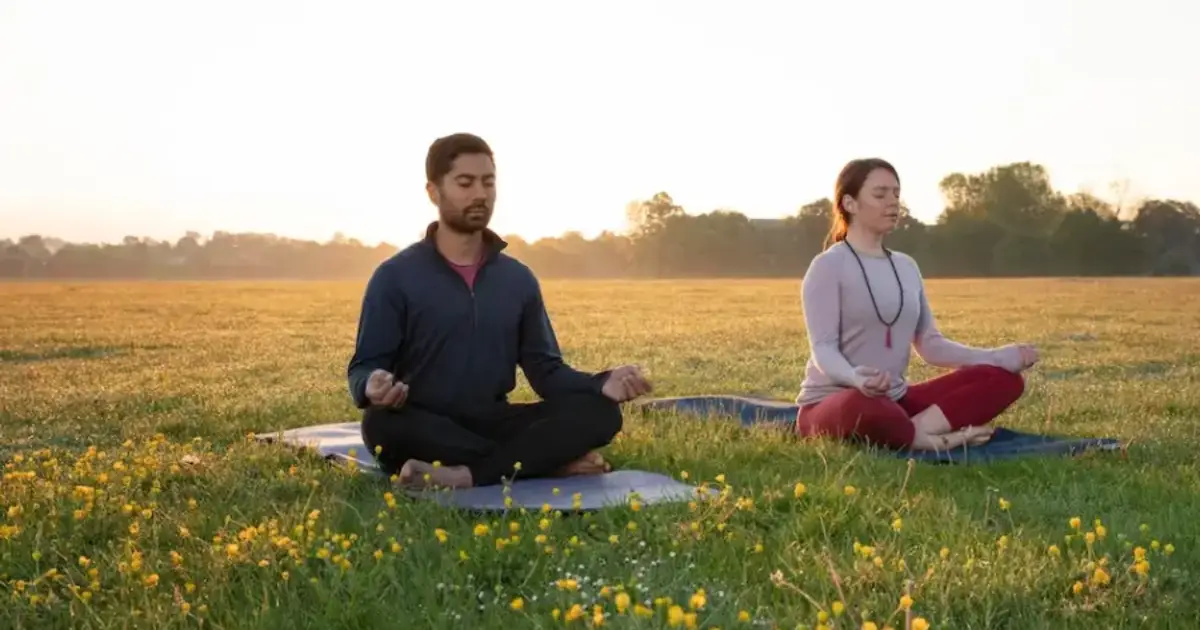
Get A Free Quote


Have you ever tried to control your breathing? Lung.ca says we breathe in and out an average of 22,000 times per day. Breathing is not just a biological function but a powerful tool for relaxation and mindfulness. Whether you're a newbie to the practice or an experienced yogi, join us on this journey to explore conscious breathing. Even Patanjali’s Yoga Sutras mention pranayama as a significant practice for Samadhi.
Let's start at the very beginning.
It is the practice of conscious breathing But there's more to it than just inhaling and exhaling. Prana is an essential life force that courses through an intricate network of subtle energy channels known as nadis, along with energy centers called chakras. This life force generates an aura that surrounds the body. The quantity, quality, and flow of prana through the nadis and chakras all have an impact on how we feel mentally.
A pranayama cycle has three phases:
Breath is the life force that sustains us from the moment we are born until our last breath. How does it work? As we breathe, our lungs expand and contract, helping us expel toxins and waste products from our bodies. Our breath is intricately linked to our emotional state and mental well-being. Have you noticed how your breath quickens when you're anxious or stressed? Or how does it become slow and deep when you're relaxed? This reciprocal relationship works both ways: our emotions affect our breath, and our breath can also influence our emotions.
Pranayama has an ancient history and is one of the eight limbs of yoga, which are described as guidelines for living a meaningful and purposeful life. The word "Prana," which means life force or vital energy, is used in yoga philosophy to refer to breath. Prana circulates through our subtle energy channels, known as nadis, nourishing and vitalizing the entire being. When we practice Pranayama, we harness and direct this life force, influencing our physical and mental states.

Also known as Controlled breathing, it involves holding one nostril closed while inhaling and then holding the other nostril closed while exhaling. The process is then reversed and repeated. It helps reduce stress and anxiety, improves lung function, enhances mental clarity, and promotes overall relaxation. Yogic Breathing also enhances your respiratory function. 30 minutes of Anulom Vilom breathing can improve rhinosinusitis. This condition interferes with nasal and sinus drainage.
Take a comfortable seat and place your left hand on your left knee. Bring your thumb to your right nostril and your ring finger to your left nostril with your right hand. With your thumb, close your right nostril and inhale deeply and slowly through your left nostril. Then, using your ring finger, close your left nostril and open your right nostril. Exhale completely and slowly through your right nostril. Inhale deeply through your right nostril, then close it and exhale through your left. This concludes the first round. Repeat a few times more, alternating the nostrils.
When you miss even one hour of your regular sleep, you become less productive and experience fatigue at work. A frustrated coworker or a furious wife may result from this. Do we want that? Kapalbhati simply means a shining forehead and better intellect. This technique requires you to sit in a certain position and breathe. Say goodbye to insomnia while destressing.
Sit comfortably with a straight spine. Take a deep inhale, and as you exhale, forcefully and rapidly contract your abdominal muscles to push the breath out in short bursts through your nose. Allow the inhales to happen passively as your focus remains on the exhalations.
Bhastrika means purifying the mind, just as the blacksmith blows his bellows to create heat and purify iron. This has proven to help people remove blockages when practiced regularly. It improves metabolism and circulation in our bodies. Most pranayama techniques are known to increase or decrease our body temperature. It calms your mind and energizes your entire body. Asthma sufferers benefit from this rapid, forceful breathing, which also reduces throat inflammation.
Sit in a comfortable position with your hands resting on your knees. Take a deep inhale, and as you exhale, forcefully and rapidly inhale and exhale through your nose. Expand and contract your diaphragm fully to create a bellows-like effect. Start with a moderate pace and gradually increase the speed.
Did you know that curling your tongue allows you to cool down your body? Cool, isn't it? Sitali is a cooling breath technique that is known to reduce stress and calm the mind. It is especially useful in hot weather or after strenuous practice when you need to cool down. It is particularly beneficial for people who get hot flushes. So, in essence, you are your air conditioner.
Sit comfortably and roll your tongue into a tube shape (if you can't, make an "O" shape with your mouth). Inhale deeply through the tube, or "O," and then close your mouth, exhaling slowly and completely through your nose.
If you like Star Wars, this is the place to be. Ocean Breath, also known as Darth Vader Breath due to its distinct sound, is a position in which you inhale and exhale through your nose. By concentrating on your breathing, you can relax your body and mind. Ocean Breath releases tension in your body and improves concentration.
Inhale deeply through your nose, slightly constricting the back of your throat, and exhale slowly and audibly through your nose, creating a gentle ocean-like sound.
So, you might be wondering,

Pranayama is best done on an empty stomach in the morning, preferably in a room with fresh air. Just make sure to give your stomach four hours to digest your meal. Early mornings are ideal because no one is awake yet, allowing you to enjoy the peace.Evenings and dusk can also work. Evenings are the best times to practice slow, calming pranayamas.
Practicing Mindful breathing every day at the same time is recommended for best results. Making pranayama a part of your daily routine will amplify its benefits. It's like building a strong foundation for your mind-body connection.
Yoga is more than just a workout; it can be incorporated into one's lifestyle to reap numerous benefits over time. While there are no quick fixes in yoga, regular pranayama practice has many tangible advantages. Here are some of the scientifically proven benefits:
The exciting part is that your journey with pranayama does not have to end here! This is only the beginning. As you can see, pranayama can benefit your physical health as well as your mental clarity and emotional well-being. So go ahead and take the next step. Do not be concerned with perfection; what matters is progress. Remember that the goal is to cultivate a consistent practice that will reward you over time, not to achieve immediate results. Namaste